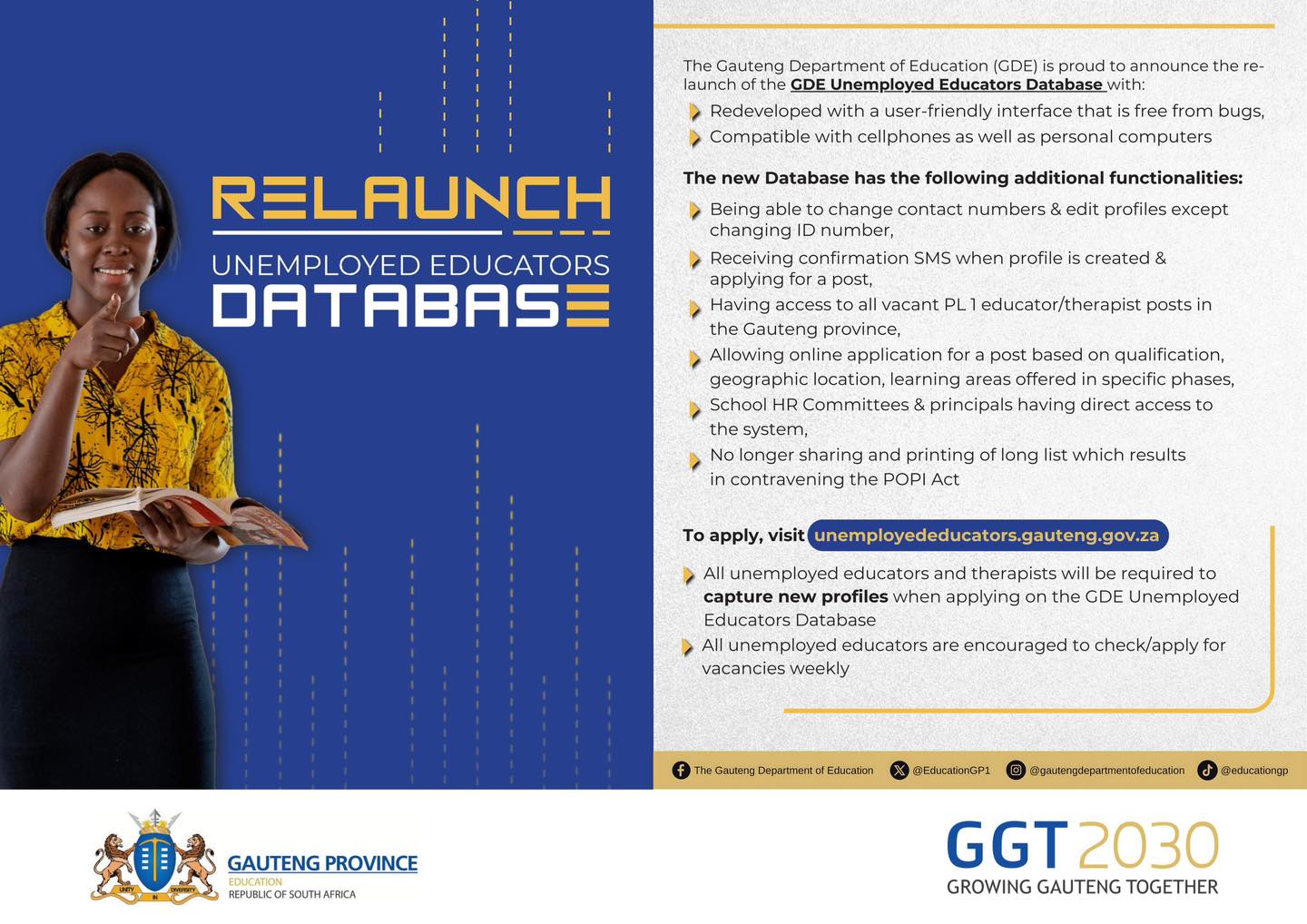By Gareth Stokes
To prosper in 2025, South Africa (SA) will have to navigate global volatility and accelerate local reforms. Momentum Investments’ latest insights highlight 10 macro trends that will shape the year ahead, from Trump-era trade turbulence to the stability (or fragility) of the Government of National Unity (GNU).
The Trump 2.0 effect While the majority of South Africans enjoyed some downtime over the holidays, Momentum’s macro investment team was hard at work preparing their market and economic outlook for the New Year.
The document, published with inputs from the asset manager’s Chief Economist, Sanisha Packirisamy, and Head of Asset Allocation, Herman van Papendorp, begins its 2025 outlook section under the tagline, ‘Trump policies could spur extended United States (US) economic exceptionalism’.
They suggest that the US could build on the almost 3% economic growth achieved in 2024 while its financial markets continue their double-digit growth momentum. “The global economic landscape is set to be shaped by a mix of policy shifts, geopolitical developments and structural challenges,” wrote Packirisamy, before offering up the local and offshore trends that will influence economies, financial markets and independent financial adviser (IFA) decision making over the coming year. FAnews has stuck with the trend titles used in the report.
1) Trump’s economic playbook
Your writer penned this newsletter on the morning of President Donal Trump’s inauguration, and mere hours after South Africa’s Elon Musk had joined him on stage at pre-inauguration Victory Rally. According to Momentum, Trump’s deregulation efforts, foreign policy, immigration ‘returns’ and tax policy “will shape both domestic and global markets” this year.
The media has reported widely on Republican interventions that could boost the domestic economy including aggressive deregulation in the energy and finance sectors; strict immigration policy that could see mass deportations and tougher border controls; and tax cuts to stimulate economic growth, increase disposable income and reduce corporate taxes. That said it will be some time for the extent of Trump’s promised interventions to become clear, and the impact of same to filter through to the economy.
Emerging markets will be less enthusiastic about expected shifts in foreign policy and moves to reinstate high tariffs on Chinese imports, and introduce tariffs for Canada, Mexico and BRICS countries. Some fear that BRICS countries could face 100% tariffs if they press ahead with a bloc currency to challenge the US dollar. “These tariffs are part of a protectionist trade strategy and could pressure China to make concessions, particularly on intellectual property,” Packirisamy said.
2) The future of American exceptionalism
It is difficult to diss Trump’s ‘America first’ and MAGA catchphrases; but this patriotic focus could have unintended consequences. “By prioritising domestic interests over global engagement, Trump’s policies risk diminishing the country’s traditional role as a leader in promoting democracy and fostering international economic cooperation,” wrote Momentum. Your writer counters with: “Putting domestic interests first does not mean abandoning the international stage.”
US citizens will experience these policy changes as continued economic growth, with US GDP forecast at 2.5-3% for the coming year. Growth will be supported by consumer spending, fiscal measures, low unemployment rates and technological advancements, to name a few. This contrasts with the rather lacklustre growth forecasts across the European Union and United Kingdom. Momentum also noted some concerns under this trend.
They warned that tax cuts would contribute to a growing US trade deficit and widening income inequality and said that protectionist trade policies “risked provoking retaliatory actions from the US’ trading partners, disrupting international trade flows and alienating crucial allies.”
3) Disrupted last mile of disinflation
“While inflation has shown signs of cooling, Trump’s policies could reignite price pressures, complicating consumer relief and impeding progress,” Packirisamy wrote. For example, labour shortages due to mass deportations could also drive wage inflation. And according to the Peterson Institute for International Economics (PIIE), US middle-income households could lose about USD1 700,00 annually, with women and small businesses particularly vulnerable. Commentators also argued that the benefits of deregulation are skewed towards shareholders rather than consumers.
Against this backdrop, those banking on further US Federal Reserve rate cuts over the coming 12 months could be disappointed. “Factoring in comments from the Fed’s December 2024 rate-setting meeting, the futures markets have pared back expectations on interest rate cuts to two by the end of 2025 and three by the end of 2026,” Momentum said. They warned of concerns over US national debt, which is forecast to rise from 99% of GDP today to 143% by 2035.
4) China’s plans to combat Trump’s tariffs
Momentum contended that Trump’s return was part and parcel of the challenges facing China’s economy. And global asset manager, Goldman Sachs, has warned that escalating US-China trade tensions could lead to growth downgrades, with aggressive tariffs posing significant risks to China’s economy. As the yuan depreciates, China will have to double down on domestic policies aimed at boosting growth, including a pivot toward social welfare spending and support for the real estate sector.
5) Trump’s foreign policy reset
Evidence of Trump’s intervention in foreign policy were on display days before his inauguration. Case in point, the long-awaited Hezbollah-Israel ceasefire kicked off with the release of three hostages on 19 January 2025. “This is [seen as] a victory for Israel and a boost to Trump’s image as a peacemaker, [but] doubts persist about the ceasefire’s sustainability amid regional tensions,” Packirisamy wrote.
Resolving conflicts between Russia-Ukraine and ongoing tensions in the South China Sea will prove more difficult. There are also concerns about new flashpoints as the US eyes redefining its relationships with Canda, Greenland and Panama. PS, your writer would use anchoring or ‘strategic posturing’ to counter media sensationalism here. In other words, Trump is making aggressive demands but desires softer concessions.
6) The GNU on trial
Trends six through 10 focused inwardly on South Africa. Momentum said that our economic future “rests on the GNU’s stability and its ability to address pressing challenges like unemployment, rising costs and stagnant wages.” Never a truer word; but analysts have warned that the GNUs’ failure to deliver tangible improvements in areas like economic growth and job creation could lead to future political and social upheaval.
7) Private sector helping to steer SA’s economic
The private sector has taken a more hands-on stance over the past year or two, as illustrated by Business for South Africa’s focus on energy, transport and logistics, and crime and corruption challenges. “Our economic outlook for 2025 hinges on improving electricity supply, primarily through Eskom’s efforts and growing private sector involvement,” Packirisamy wrote. Business may, however, have to add another focus area to the three already mentioned, namely water security.
8) From renewed optimism to economic revival
According to Momentum, “The establishment of the GNU has boosted confidence among local fund managers, with growing optimism about accelerated reforms according to Bank of America Merill Lynch’s Fund Manager Survey which flipped from negative net expectations earlier in 2024.” Markert commentators are also hopeful that South Africa will exit the Financial Action Task Force (FATG) grey list by October 2025, enhancing the country’s attractiveness. On the flipside, these enthusiastic assessments and predictions are not translating into infrastructure spending or economic growth.
9) Government’s road to more balanced books
The public sector wage bill has been a major issue, going back decades. To succeed, government needs to deliver on its oft-promised fiscal consolidation; but the 4.7% wage increase offered to its 1.3 million employees has already incensed trade unions. “[Fiscal] challenges loom, including increased support for struggling state entities, managing civil servant wage pressures and expanding social aid sustainably,” wrote Momentum, warning that debt servicing costs would swell to R1.3 billion per day by 2027-28.
10) SA’s ability to weather global volatility
“Despite domestic political stability under the GNU, [our economic growth] remains vulnerable to global instability, including geopolitical tensions, fluctuating commodity prices and economic slowdowns among key trading partners,” Packirisamy said.










